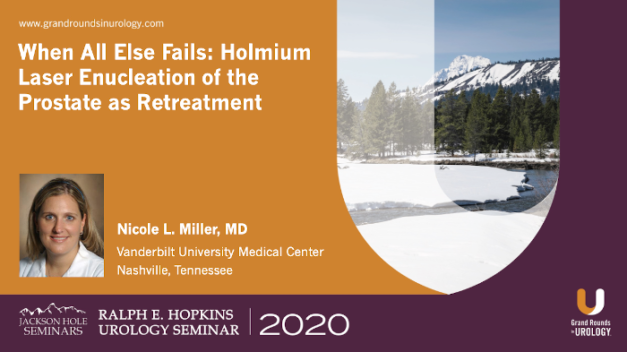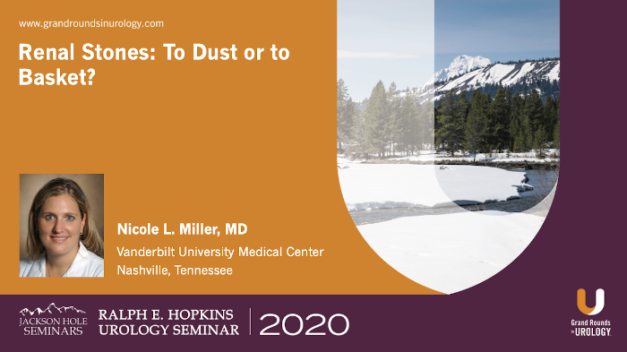When All Else Fails: Holmium Laser Enucleation of the Prostate as Retreatment for BPH
Nicole L. Miller, MD, FACS, Associate Professor of Urology at Vanderbilt University Medical Center, discusses Holmium laser enucleation of the prostate (HoLEP), particularly focusing on the retreatment setting. AUA guidelines have recently been updated and now mirror EAU guidelines which suggest sizing a prostate before determining treatment options. Dr. Miller examines case studies that underscore the effectiveness of HoLEP in removing large prostates after the patients had previously undergone unsuccessful treatments, including transurethral resection of the prostate (TURP) and prostatic urethral lift. She then analyzes outcomes of a study that compared primary HoLEP (pHoLEP) to retreatment (rHoLEP) observing that the retreatment setting patients experienced shorter operative times, shorter length of stay, had less tissue resected, and had a higher rate of urethral stricture and clot retention. In spite of its utility, HoLEP has not been widely adopted and represents 4% of procedures, which Dr. Miller attributes to the steep learning curve associated with HoLEP. Lastly, she enumerates the barriers within the US medical system to physicians undertaking the HoLEP learning process and concludes that while Europe has numerous options for physicians to learn the technique, the American focus on robotic surgery means that fewer students learn open orifices surgical procedures.
Read More




